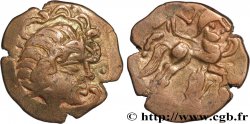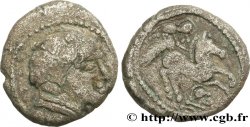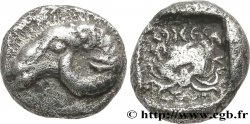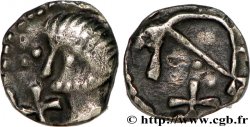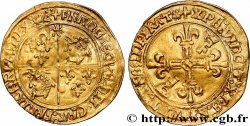Live auction - bga_622720 - GALLIEN - PICTONES (Region die Poitiers) Statère d’électrum à la main
Sie müssen angeschlossen sein und von cgb.fr genehmigt werden, um in einer E-Auktion teilzunehmen.Melden Sie sich an, um zu wetten..Die Kontobestätigungen sind innerhalb von 48 Stunden nach Ihrer Anmeldung gemacht.Warten Sie nicht bis die letzten zwei Tage vor dem Abschluss eines Verkaufs, um Ihre Registrierung abzuschließen. Klickend "BIETEN" verpflichten Sie sich vertraglich, diesen Artikel zu kaufen und Sie nehmen ohne Reserve die allgemeinen Verkaufsbedingungen für den live auctions zu cgb.fr an.
Der Verkauf wird an der Zeit auf der Übersichtsseite angezeigt geschlossen werden. Angebote, die nach der Schließung Zeit empfangen sind, werden nicht gültig.
Bitte beachten Sie, dass die Fristen für die Einreichung Ihres Angebots auf unsere Server können variieren und es kann zur Ablehnung Ihres Angebots entstehen, wenn es in den letzten Sekunden des Verkaufs gesendet wird. Die Angebote sollen mit ganzer Zahl ausgeführt sein, Sie können Kommas oder des Punktes in Ihrem Angebot nicht erfassen. Bei Fragen klicken Sie hier, um einen Blick auf die FAQ Live-Auktionen.
Alle Gewinngebote unterliegen einem Aufschlag von 18 % für Verkaufskosten.
Alle Gewinngebote unterliegen einem Aufschlag von 18 % für Verkaufskosten.
| Schätzung : | 1 200 € |
| Preis : | 1 150 € |
| Höchstgebot : | 1 350 € |
| Verkaufsende : | 08 Dezember 2020 15:56:06 |
| Bieter : | 2 Bieter |
Type : Statère d’électrum à la main
Datum: IIe - Ier siècle avant J.-C.
Name der Münzstätte / Stadt : Poitiers (86)
Metall : Gold
Durchmesser : 20 mm
Stempelstellung : 9 h.
Gewicht : 7,61 g.
Seltenheitsgrad : INÉDIT
Kommentare zum Erhaltungszustand:
Droit frappé de manière confuse mais très beau revers particulièrement stylisé et éloigné des frappes classiques. Beau métal bien jaune
Pedigree :
Exemplaire provenant de la collection J. H
Vorderseite
Titulatur der Vorderseite ANÉPIGRAPHE.
Beschreibung Vorderseite Tête (d’Ogmius) à droite, la chevelure en grosses mèches, d’où partent des cordons perlés.
Rückseite
Titulatur der Rückseite ANÉPIGRAPHE.
Beschreibung Rückseite Aurige tenant une couronne dirigeant à droite un cheval androcéphale ; dessous, une main.
Kommentare
Cette monnaie présente un nombre important de particularités qui nous semblent totalement inédit ! Le métal, contrairement au monnayage habituel, semble en bon or et est de poids très lourd.
Au droit, le style, bien que très brouillon est encore très orienté vers l’Armorique, les Namnètes notamment. Au revers, aucun symbole ne sort de la bouche du cheval mais il nous semble distinguer un motif en bord de tranche, reste d’un étendard ??
Cette monnaie pourrait être plus ancienne que le monnayage traditionnel des statères à la main, prototype des futurs statères ???.
This coin presents a significant number of particularities that seem to us to be totally unprecedented! The metal, unlike the usual coinage, seems to be good gold and is very heavy. On the obverse, the style, although very rough, is still very oriented towards Armorica, the Namnetes in particular. On the reverse, no symbol comes out of the horse's mouth but we seem to distinguish a motif on the edge of the edge, the remains of a standard?? This coin could be older than the traditional coinage of hand-made staters, prototype of future staters???
Au droit, le style, bien que très brouillon est encore très orienté vers l’Armorique, les Namnètes notamment. Au revers, aucun symbole ne sort de la bouche du cheval mais il nous semble distinguer un motif en bord de tranche, reste d’un étendard ??
Cette monnaie pourrait être plus ancienne que le monnayage traditionnel des statères à la main, prototype des futurs statères ???.
This coin presents a significant number of particularities that seem to us to be totally unprecedented! The metal, unlike the usual coinage, seems to be good gold and is very heavy. On the obverse, the style, although very rough, is still very oriented towards Armorica, the Namnetes in particular. On the reverse, no symbol comes out of the horse's mouth but we seem to distinguish a motif on the edge of the edge, the remains of a standard?? This coin could be older than the traditional coinage of hand-made staters, prototype of future staters???







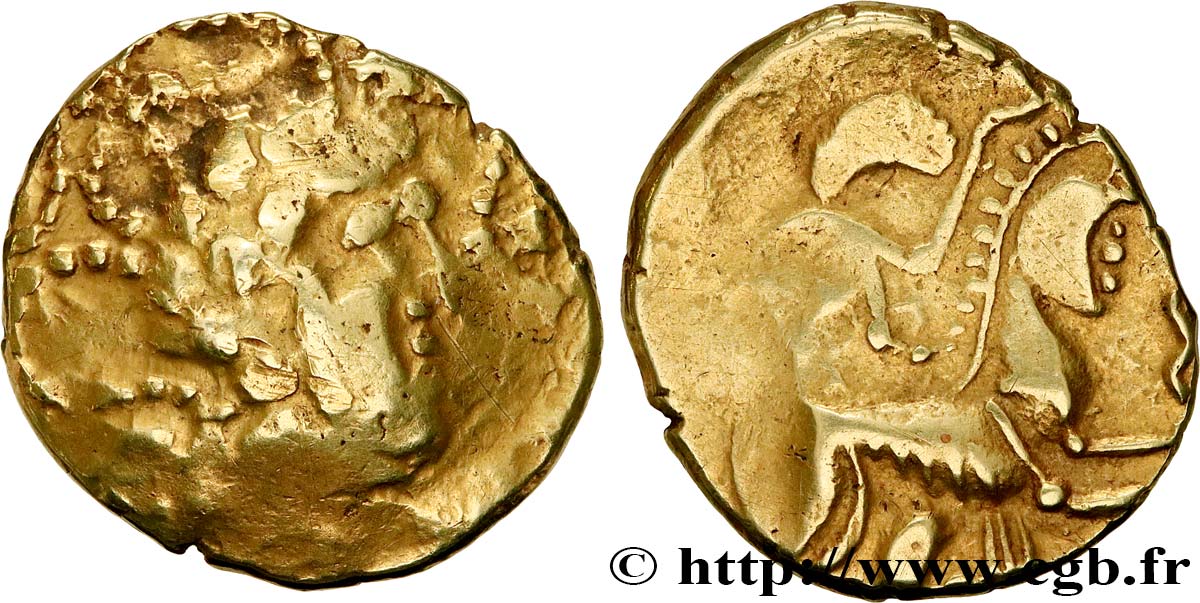
 Berichten über einen Fehler
Berichten über einen Fehler Die Seite drucken
Die Seite drucken Teilen meiner Auswahl
Teilen meiner Auswahl Stellen Sie eine Frage
Stellen Sie eine Frage Einlieferung/Verkauf
Einlieferung/Verkauf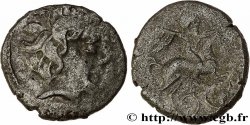
 Details
Details